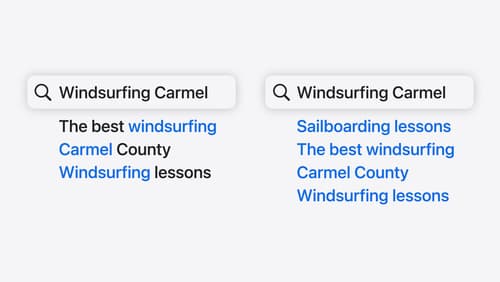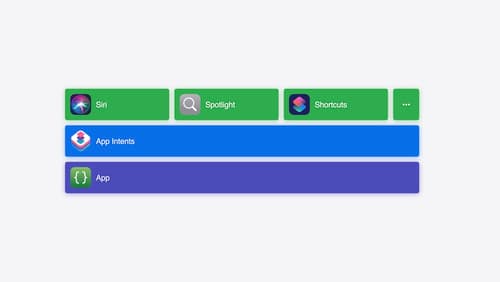préparer les intent pour Spotlight, short cut
Asked on 2024-08-01
1 search
To prepare intents for Spotlight and Shortcuts, you can follow the guidance provided in the WWDC sessions. Here are the key steps and relevant sessions to help you get started:
-
Understanding App Intents:
- Session: Bring your app’s core features to users with App Intents
- Chapter: Understanding the framework
- Details: This session explains how to create app shortcuts, which are wrappers around intents that highlight important functions of your app. These shortcuts can be made available in Spotlight and Siri.
-
Creating App Shortcuts:
- Session: Bring your app’s core features to users with App Intents
- Chapter: Building the code
- Details: This part of the session shows how to define an app shortcuts provider with a static member, which is a list of app shortcuts. It also explains how to pre-fill parameters and make the shortcuts available in Spotlight and Siri.
-
Spotlight Integration:
- Session: What’s new in App Intents
- Chapter: Spotlight integration
- Details: This session introduces new APIs that allow you to index your app entities in Spotlight, bringing powerful semantic search to app entities.
-
Core Spotlight and Semantic Search:
- Session: Support semantic search with Core Spotlight
- Chapter: Searchable content
- Details: This session covers how to use Core Spotlight to donate searchable content to Spotlight and retrieve it with a query. It also introduces semantic search, which allows users to search for content in their own way.
-
Designing App Intents:
- Session: Design App Intents for system experiences
- Chapter: Which App Intents to make
- Details: This session provides guidance on designing app intents that can be surfaced in system experiences like Spotlight, the action button, and Siri.
By following these sessions and chapters, you can effectively prepare intents for Spotlight and Shortcuts, making your app's core features easily accessible to users.

Support semantic search with Core Spotlight
Learn how to provide semantic search results in your app using Core Spotlight. Understand how to make your app’s content available in the user’s private, on-device index so people can search for items using natural language. We’ll also share how to optimize your app’s performance by scheduling indexing activities. To get the most out of this session, we recommend first checking out Core Spotlight documentation on the Apple Developer website.

Design App Intents for system experiences
App Intents power system experiences in controls, Spotlight, Siri, and more. Find out how to identify the functionality that’s best for App Intents, and how to use parameters to make these intents flexible. Learn how to use App Intents to allow people to take action outside your app, and see examples of when to navigate into your app to show contextual information.

Bring your app’s core features to users with App Intents
Learn the principles of the App Intents framework, like intents, entities, and queries, and how you can harness them to expose your app’s most important functionality right where people need it most. Find out how to build deep integration between your app and the many system features built on top of App Intents, including Siri, controls and widgets, Apple Pencil, Shortcuts, the Action button, and more. Get tips on how to build your App Intents integrations efficiently to create the best experiences in every surface while still sharing code and core functionality.
